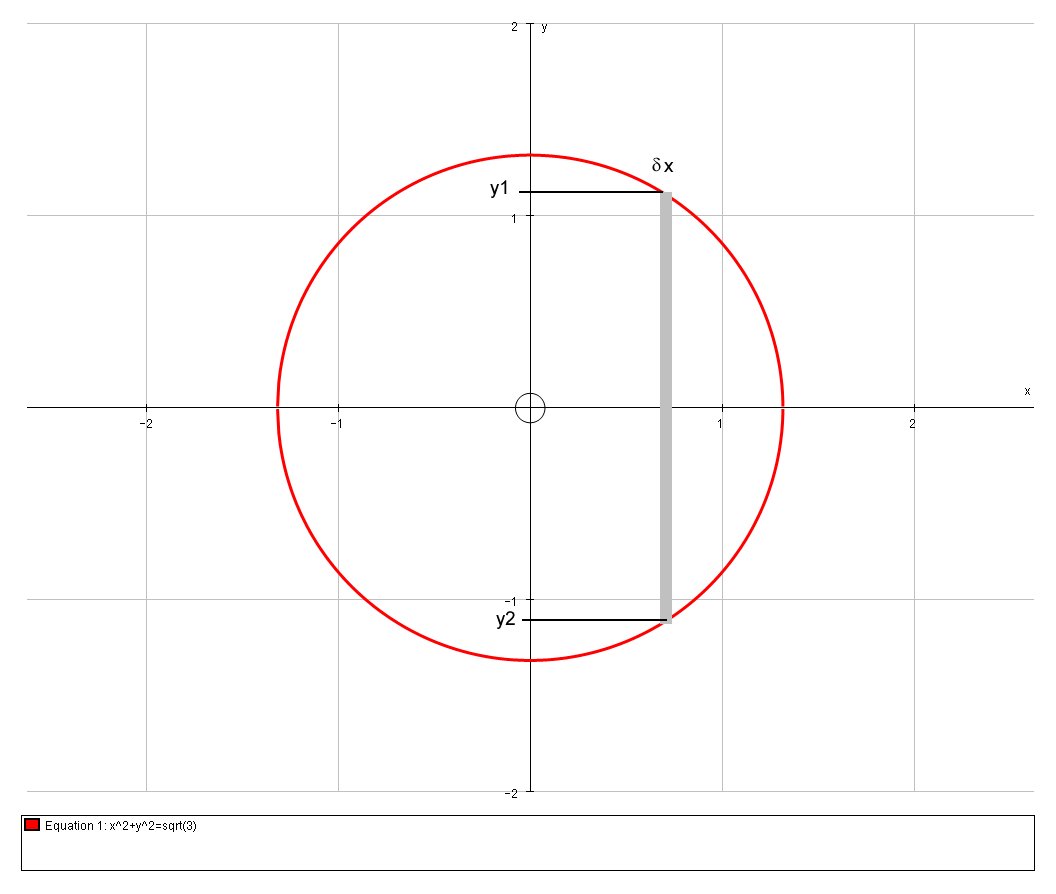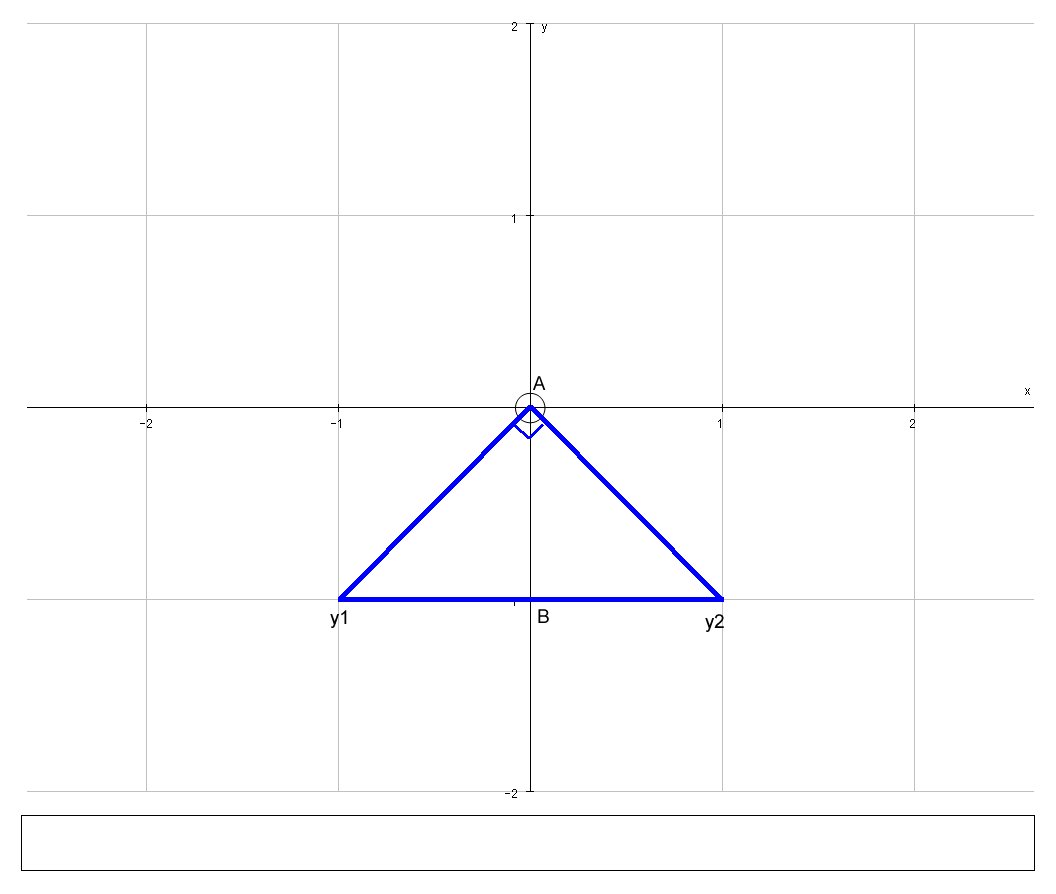Find the volume of the solid via cross-sections?
The base of a solid is a circular disk with radius 3. Find the volume of the solid if parallel cross-sections perpendicular to the base are isosceles right triangles with hypotenuse lying along the base.
Answer key: #V=36#
The base of a solid is a circular disk with radius 3. Find the volume of the solid if parallel cross-sections perpendicular to the base are isosceles right triangles with hypotenuse lying along the base.
Answer key:
1 Answer
Explanation:
Consider a vertical view of the base of the object.

The grey shaded area represents a top view of the right angled triangle cross section. In order to find the volume of the solid we seek the volume of a generic cross sectional triangular "slice" and integrate over the entire base (the circle)
The equation of the circle is:
# x^2 + y^2 = 3^2 #
So for some arbitrary
# y^2=9-x^2 #
# :. y = +-sqrt(9-x^2) #
So for that arbitrary
# y_1 = +sqrt(9-x^2) #
# y_2 = -sqrt(9-x^2) #
Thus, the length of the base of an arbitrary cross sectional triangular slice is:
# l = y_1 - y_2 #
# \ \ = sqrt(9-x^2) - (-sqrt(9-x^2) ) #
# \ \ = 2sqrt(9-x^2) #
The following depicts a side view of the triangular slice.
![Steve M]
Thus the Area of an arbitrary cross sectional triangular slice is:
# A_("slice") = 1/2 xx "base" xx "height" #
# " " = 1/2( 2sqrt(9-x^2) ) ( sqrt(9-x^2) ) #
# " " = 9-x^2 #
Finally, the volume of the entire solid is the sum of those arbitrary cross sectional slices over the circular base:
# V = sum_("circle") lim_(delta x rarr 0) A_("slice") delta x #
# \ \ \ = int_(-3)^(3) 9-x^2 dx #
# \ \ \ = [9x-x^3/3]_(-3)^(3) #
# \ \ \ = (27-9) - (-27+9) #
# \ \ \ = 27-9+27-9#
# \ \ \ = 36 #

